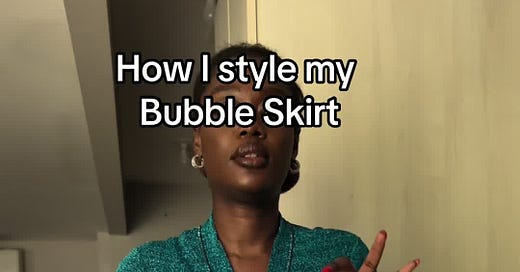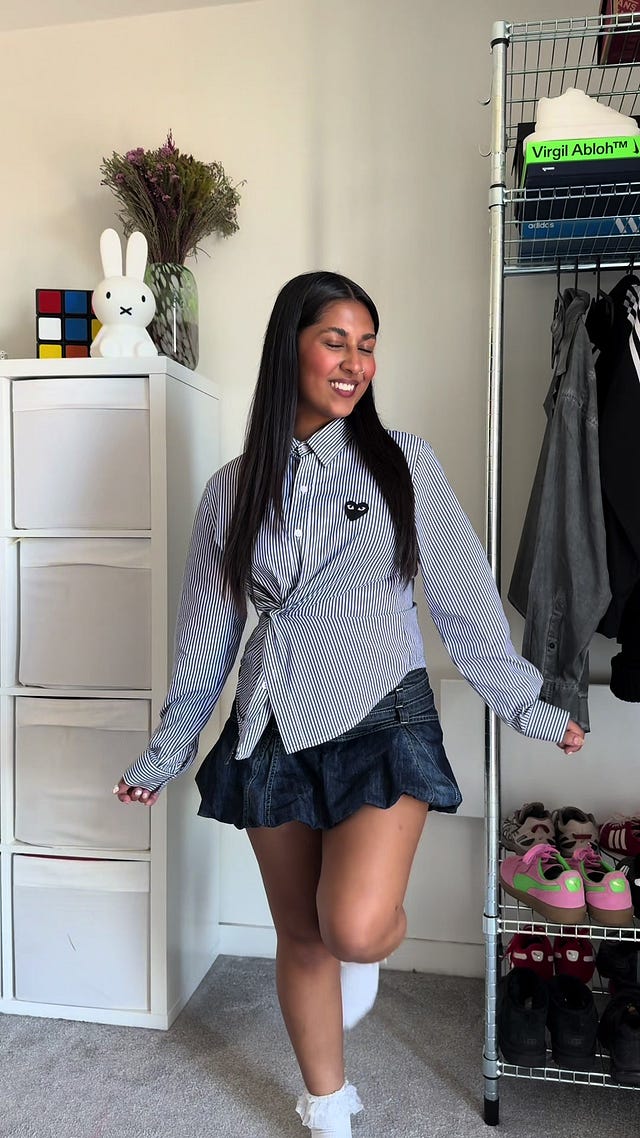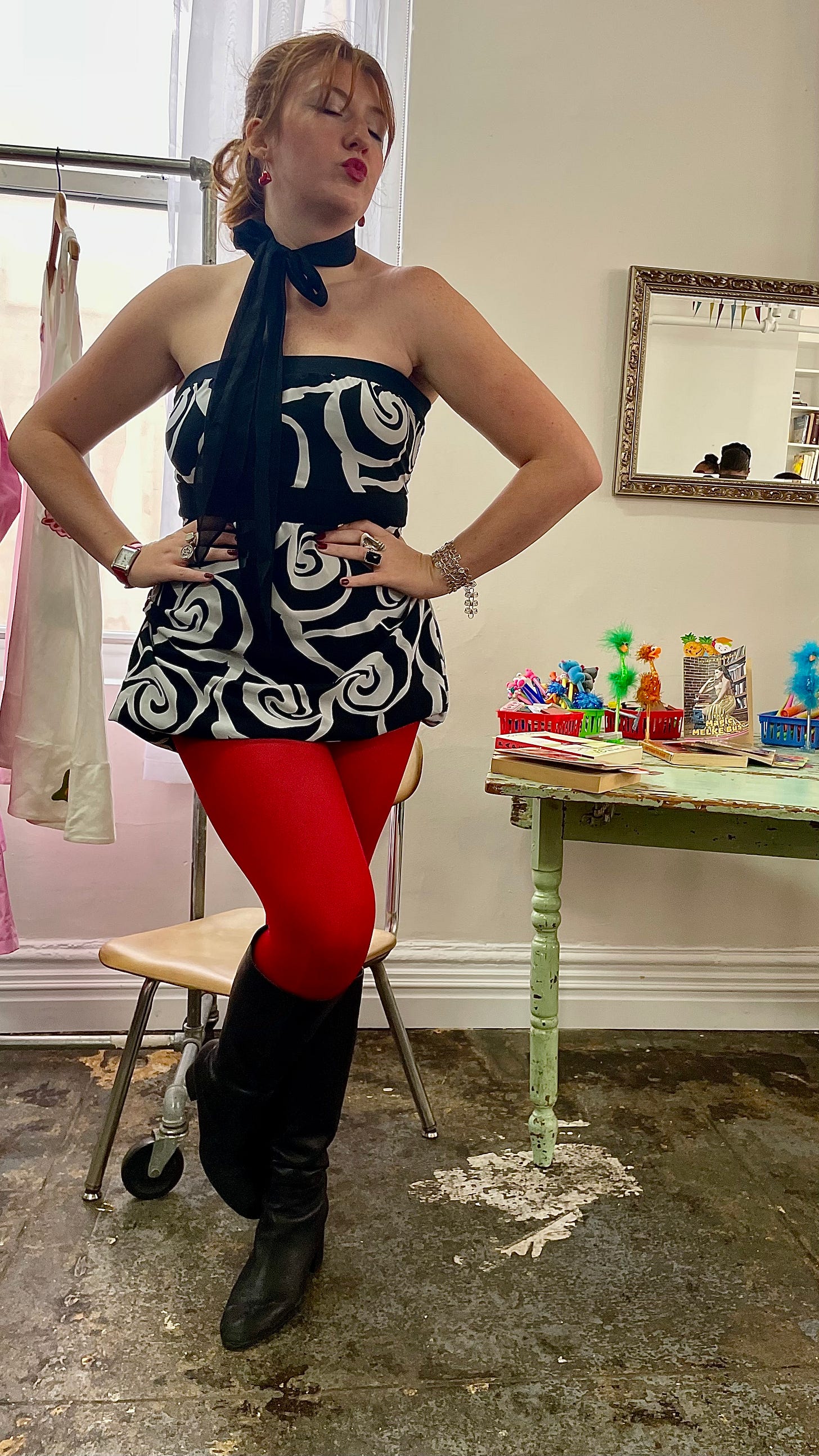Bubble Hems Blow Up Again
Floating through the history of the bubble hem, plus how I faked the trend with some safety pins.
Bubble hems are bursting at the seams, all over the trendy scene.
This bubbled effect seen on dresses and skirts is made by an elastic band, synching at the bottom.
Now, some say it looks like you’re wearing a duvet cover (truly hard to unsee). But this hem is a stylists dream. It is the perfect layering piece because it creates dimension, bursting from the hips.
 Tiktok failed to load.
Tiktok failed to load.Enable 3rd party cookies or use another browser
Now, the bubble hem didn’t pop out of nowhere, its actually a revival. The supposedly ‘new’ trend is associated with the 1980’s, although it can be tracked back to the 1950s and 1960s as part of the post-war period's focus on youthful and playful styles.
In the war period, everyone was on rations, including fabric. So then in post war, those rations were lifted; fashion could become fun again. Pierre Cardin and Hubert Givenchy were among the first to experiment with this intriguing silhouette in 1954 and 1956. By the 1960s, the bubble hem was the it-girl for prom.
So, why is it associated with the ‘80s?
During the decade of decadence, the hems were often bigger and more exaggerated. This era was marked by economic prosperity and a sense of optimism. Fashion reflected this with bold colors, power dressing, and playful details like bubble hems.
Although anything big and bulky seems to scream 80s, thats not the reason. Its celebrities of course. Fashion icons, such as Madonna and Princess Diana wore different takes on the bubble skirt.
Although some may pretend that runway shows don’t influence our fashion choices, the bubble hem was on the runway last year.
Obviously, we are not in a post-war period and definitely not in a time of economic prosperity, so why is the bubble hem back?
It is a natural pendulum swing away from minimalism. From our fashion to our activism, individualism has been associated with Gen Z. However, this grand generalization seems to only be true for half of our generation—the other half is conforming.
Think of all of the -core’s and aesthetics. Many members of Gen Z want to simplify themselves down to a few digestible terms. Those who hate this trend cycle love the bubble hem; I think the bubble hem is really for people who love fashion and love experimenting.
So, you think it’s cute but don’t want to buy into it? Well, I didn’t either. Here’s how to fake the trend:
Put on a dress or long skirt.
Take your hem and fold it underneath towards your body.
Then, start safety pinning until you get your spherical sensation.
Here is the final product:








